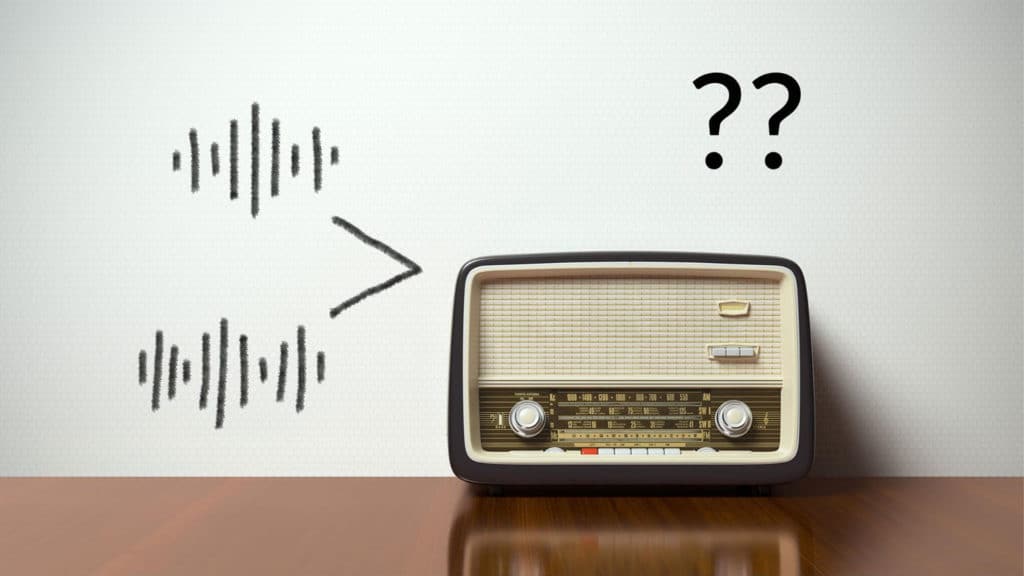Speaker identification is the process of identifying the speaker in a recorded audio segment, based on vocal characteristics. Speaker identification is used to tag speakers in a segmented audio file, enabling readers to know who is speaking when.
What is Speaker Identification?
Speaker identification is part of the larger task of speaker diarization. Speaker diarization involves partitioning an audio stream into distinct segments and tagging each according to the speaker’s identity. Speaker identification is focused more narrowly on using audible characteristics of the recording to determine who’s speaking during each segment.
If you’ve ever reviewed an AI-generated transcript after an online meeting, you’ve seen speaker identification in action. Speaker identification systems notice when someone is speaking based on features like the acoustic frequency of their voice, enabling the AI to create an accurate transcript reflecting who was speaking at what point.
Approaches to Speaker Identification
Voice recognition is everywhere these days, with platforms like Otter, Speechmatics and Amazon Transcribe gaining in popularity. So it’s no wonder more and more developers are building speech recognition into their applications. If you’re looking to do the same, here’s how to get started.
Build Your Own System
The most obvious approach is to build it yourself. But building your own speaker identification system won’t be easy, considering you need several subsystems to successfully process speech:
- Speech detection: The system must be able to separate speech from non-speech. Otherwise, it won’t be able to filter out silences and other background noise from the recording.
- Speech segmentation: The system must be capable of continuously identifying the breaks between words and syllables so that it can assign them to different speakers.
- Embedding extraction: Once you’ve extracted these speech segments, the system must create a neural-network based vector representation of the data. These are commonly known as embeddings.
- Clustering: Finally, you need to cluster these embeddings. Once clustering is complete, the embeddings belonging to each speaker are put into one cluster and labeled accordingly.
To implement your own speaker identification system, the easiest approach is to use an open-source package like Resemblyzer, which can handle speech detection, speech segmentation, and embedding extraction. For clustering, consider an open-source package like Spectral Clustering.
Voiceprint Tagging
Using biometric signatures is a common method of identification. Fingerprints, palm prints, facial recognition, and iris scanning are all biometric identifiers that you can use to identify an individual.
Similarly, each individual has a unique voiceprint, too.
Everyone’s voiceprint has its own acoustic frequency, so with voiceprint recognition technology, computers are able to identify phonetic features of an individual’s voice and determine the identity of the speaker. Voiceprint recognition systems like Nuance and Aculab are remarkably sophisticated and typically able to pinpoint the identity of a speaker after fewer than ten words.
There are two primary types of voiceprint recognition systems:
1:1 recognition system: The system asks you to store your name and biometric features beforehand. When the system processes a new voiceprint, it compares it against the stored voiceprint to verify a match.
1:N recognition system: The system doesn’t ask users to store biometric information ahead of time. Instead, when the system processes a new voiceprint it compares the voice features against all those saved in memory to see if it can find a match.
Visual Cues
When identifying speakers in recorded video, visual information can provide a rich source of additional data to help identify speakers.
Shot detection is one of the most basic approaches you can use to identify speakers in recorded video. When sharp frame-to-frame differences are detected, computers tag them as a shot cut. Each shot is then analyzed and tagged as containing silence, speech, music, or environmental noise.
Next, computers analyze the shots that contain speech to tag speakers. Facial recognition algorithms identify speakers within each frame, and mouth-tracking algorithms determine when each speaker is talking.
Voice Activity Detection
Voice activity detection is a critical component of an effective speaker identification system. Most voice recordings include long pauses between sentences, breaks within sentences, and background noises that don’t need to be processed. Filtering out and processing only the input that contains speech will save you time and computing resources.
Voice activity detection typically uses simple algorithms focused on assessing the probability that a given input signal contains speech, based on indicators like signal energy. To reduce false positives, algorithms can analyze speech signals based on additional indicators like fundamental frequency to eliminate false positives and make the most accurate possible prediction.
Using a Third-Party API
Building your own speaker identification system is a highly challenging task — and we’ve barely scratched the surface of what’s involved. That’s why more and more developers are turning to sophisticated APIs to handle speech recognition in their apps.
Today’s conversational intelligence APIs offer the ability to generate advanced insights from both recorded files and real-time conversations. With a third-party API, you can incorporate speaker identification and other advanced conversational insights into your application without the hassle of building it from scratch.
Additional Reading
Interested in adding speaker identification to your application? Check out these resources to learn more:
- How to Build Your Own Speaker Diarization Module
- Voiceprint Recognition Systems
- Adaptive Speaker Identification with Audiovisual Cues
- Voice Activity Detection: An Overview
- Awesome Speaker Diarization Resources
- Speaker Diarization: A Review of Recent Research
